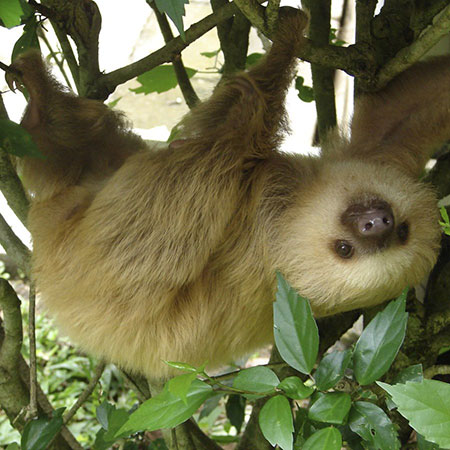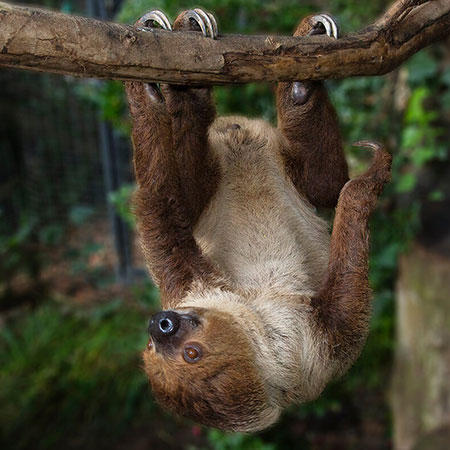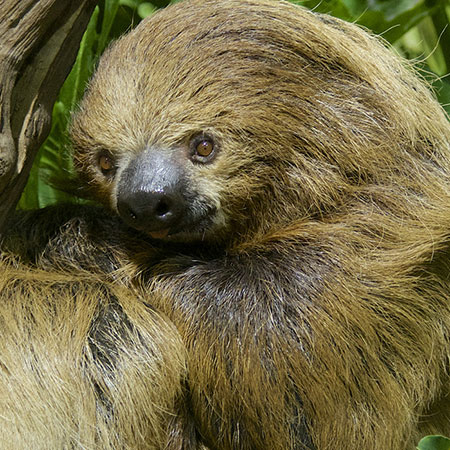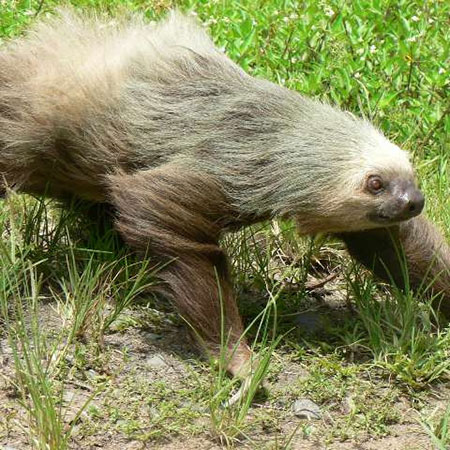Scientific Name: Choloepus hoffmanni (Hoffmann’s Two-Toed Sloth) Choloepus didactylus (Linnaeus’s Two-Toed Sloth)
Habitat: Two-toed sloths inhabit tropical rainforests of Central and South America, primarily found in lowland and montane forests. They live high in the canopy where they spend nearly all their time hanging from tree branches.
Diet: Herbivorous – They are herbivores, feeding mostly on leaves, fruits, flowers, and buds. Their slow metabolism helps them survive on a low-energy diet. Occasionally, they may consume insects or small prey opportunistically.
About the Two-toed sloths
Two-toed sloths are arboreal mammals known for their extremely slow movement and upside-down lifestyle. Unlike their three-toed cousins, they have two prominent claws on their front limbs. With strong limbs and curved claws, they are superbly adapted to hanging from tree branches. Their calm, nocturnal nature and unique appearance make them a fascinating part of rainforest ecosystems.
Unique Features
Two long claws on the front limbs (and three on the back) distinguish them from three-toed sloths.
Rotating neck allows them to turn their heads up to 270 degrees.
Algae-growing fur provides camouflage in the treetops.
Slow digestion — it can take up to a month to digest a single meal.
Low body temperature (around 86°F or 30°C) is uncommon for mammals.
Interesting Facts
Two-toed sloths come down from the trees only once a week to defecate.
Their fur hosts a mini-ecosystem, including algae, fungi, and moths.
Despite being slow on land, they are excellent swimmers.
Their powerful grip makes them very difficult to remove from branches, even in sleep or death.
Conservation Status
Two-toed sloths are classified as Least Concern by the IUCN, though habitat destruction from deforestation poses increasing risks. Their reliance on old-growth forests makes them vulnerable to urban expansion, and some populations are also affected by illegal pet trade and road accidents.




